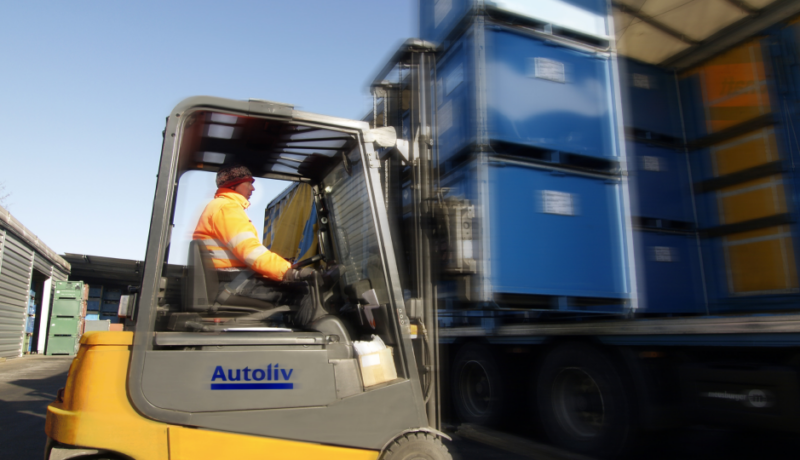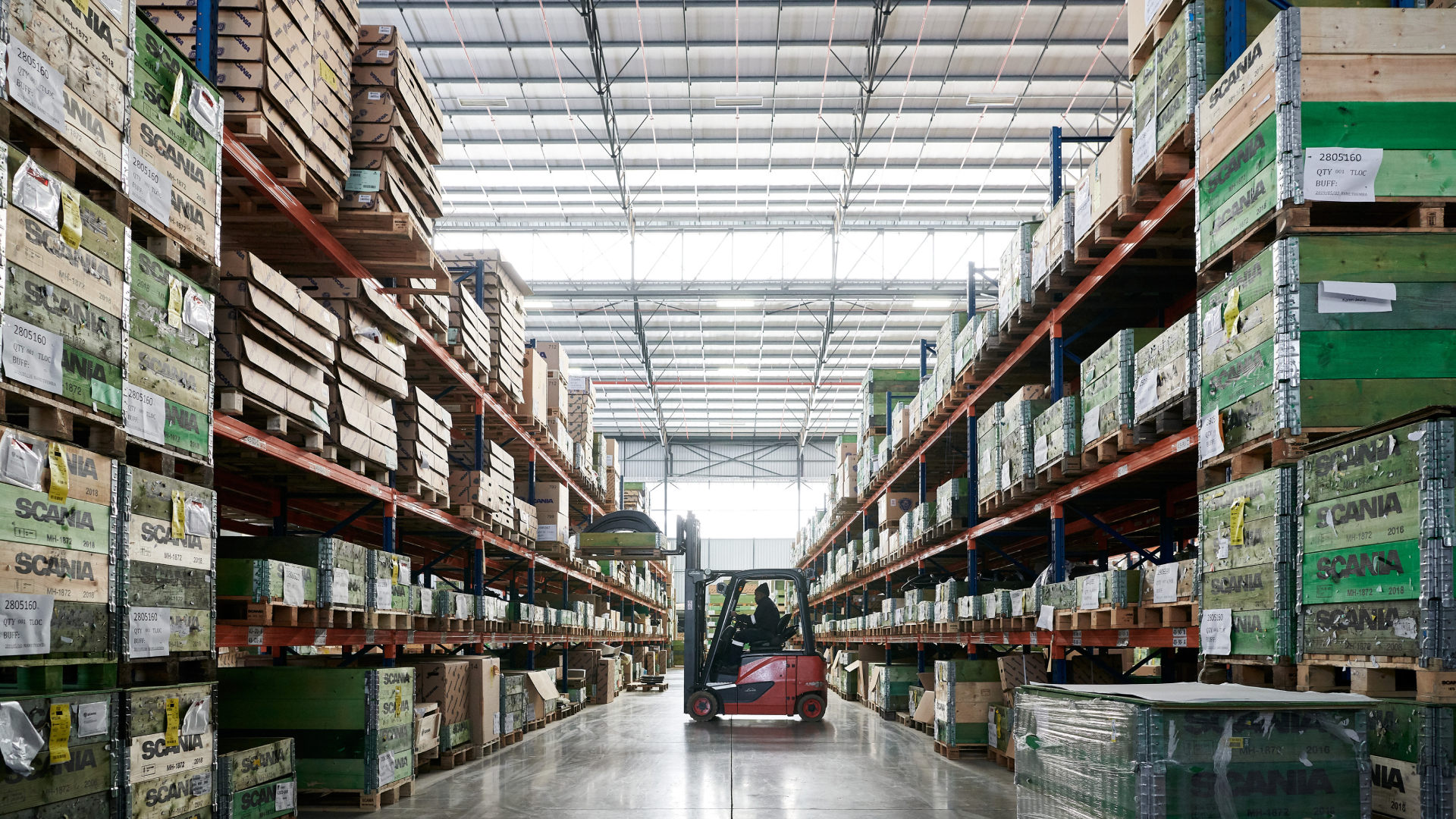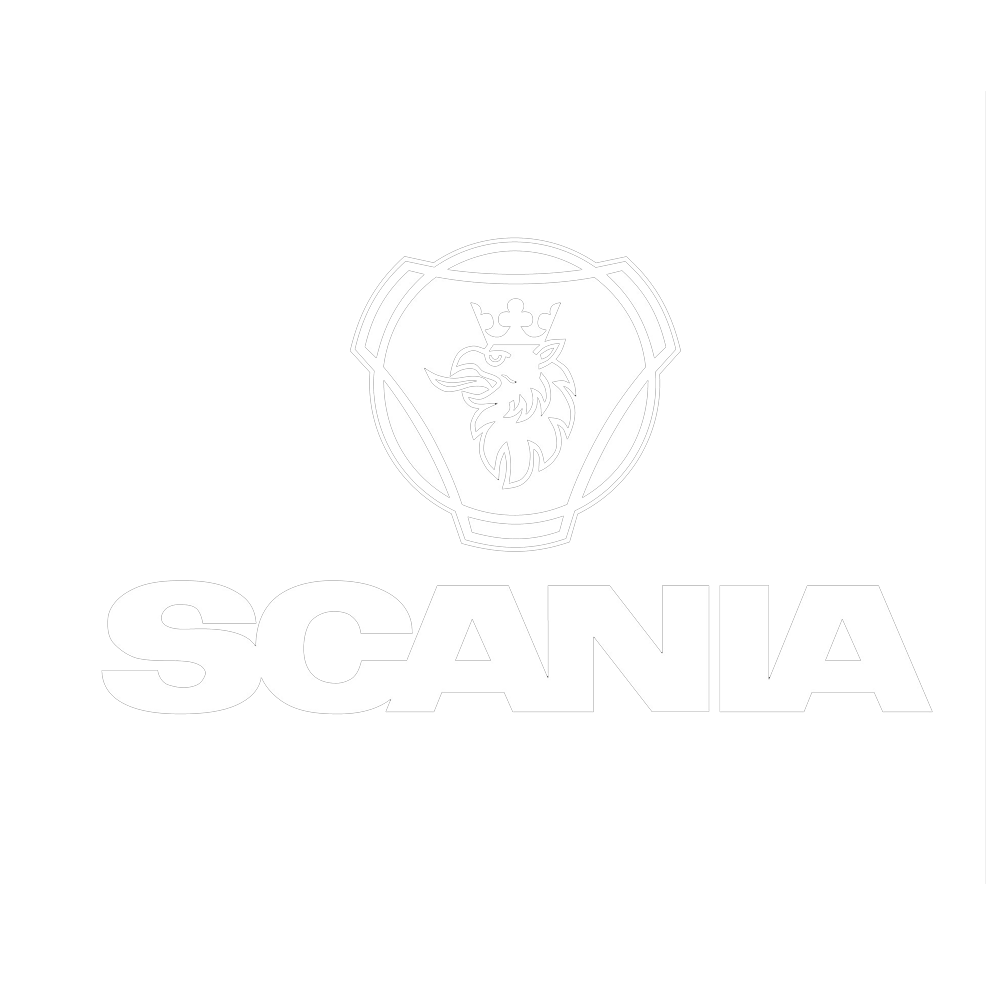At Scania, we see a growing need to connect and manage indoor robots of different brands and types from a single system to optimize indoor material movement and the flow of warehouse logistics. Therefore, we are looking for intelligent fleet management solutions that can control indoor robots, such as AGVs, AMRs, and forklifts from different brands, and optimize the overall efficiency of material movement inside our production facilities.
Opportunity overview
Currently, internal Scania logistics are mainly managed with manually driven vehicles, and the transports are planned based on interior solutions from Scania. At the same time, the technological development for autonomous vehicles and systems is rapid, and the solution space is maturing quickly, building overall momentum for the independent industry and more sophisticated solutions. Scania has been developing its industry-leading production system for over 100+ years and wants to be at the forefront of the industry development.
We at Scania are seeing the rapid transformation towards using Automated Guided Vehicles (AGVs) in many of our warehouses and production sites globally. However, we are encountering the challenge that autonomous vehicles and robots, such as AGVs, AMRs, and forklifts, from different brands do not talk to each other and cannot be controlled from a single source. AGVs are currently managed through their brand-specific interface software. This decreases the overall indoor material movement efficiency.
We envision an open fleet management system capable of controlling robot and vehicle fleets of multiple brands and vehicle types in mostly indoor environments like factories and warehouses where several vehicles are needed for logistics. We are looking for software with a high level of usability, enabling seamless interoperability with different users in our production facilities. In the long term, the software solution would also optimize the routing of fleets.
Overall, Scania is interested in software-based solutions that can improve the logistics flow, including autonomous vehicles, robots, and humans. A typical use case would be a Scania factory or warehouse, where a fleet of several (>10) mixed cars is needed. Ultimately, the potential technologies need to be adapted to Scania’s needs and fit into the Scania Production System. Thus, data integration capabilities into Scania’s internal systems are considered a benefit.
Your opportunity with Scania
Scania’s production occurs in Europe and Latin America, with eight facilities for the global interchange of components and complete vehicles. In addition, Scania has five regional product centers in Africa, Asia, and Eurasia. In total, Scania delivered more than 70 thousand vehicles in 2020, corresponding to significant levels of production and material flows. The solution could first be piloted in a piloting facility or a testing environment separated from the output. Suppose a suitable open fleet management solution is found. In that case, Scania is looking for collaboration and rollouts on a global level, and there is an opportunity to scale the technology into Scania’s production sites globally. Scania’s most exciting business model would be renting or licensing the technology from a suitable solution provider. In addition, Scania can offer experts in automation, software development, and logistics to support the pilot case.
Examples we're looking for
Multibrand operability
We are looking for solutions that can improve the whole logistics flow of indoor robots, such as AGVs, AMRs, and forklifts. As Scania utilizes robotics from different brands, compatibility with different types of robotics and brands in a single system is a crucial success factor in this business opportunity.
Traffic control
The envisioned solution allows Scania to control its internal logistics traffic and monitor the vehicles’ usability and status. In addition, the solution can collect data from all transports and offers visual dashboards to support the “control tower” and planning.
Usability
Scania’s warehouse logistics environment will mix autonomous vehicles, humans, and robots. Thus, we look for a solution capable of managing smooth interoperability with humans and manually operated vehicles.
Route optimization (long term)
We envision a solution that is not only able to control the robotic fleets but can also optimize the routings for accurate and efficient delivery of materials. These capabilities would preferably come in a combination as Scania seeks to minimize the different software in use.

Circularity Throughout Gardening Systems with Gardena, part of Husqvarna Group
We at Gardena, part of Husqvarna Group, are taking steps towards more circular operations alongside our solution portfolio, product utilization and organization. Now we seek for partners to together rethink circularity throughout…
Learn more
Fabric Warp and Weft Orientation with Autoliv
Autoliv is committed to operating its business at the highest level of quality and at the most efficient cost possible. In airbags, fabric utilization is one of the predominant cost drivers and…
Learn more
Autonomous Robotic Logistics Solution with Autoliv
Autoliv develops, manufactures and markets protective systems, such as airbags, seatbelts, and steering wheels. Our primary focus is to save lives and reduce serious injuries if an accident were to occur. As…
Learn more

